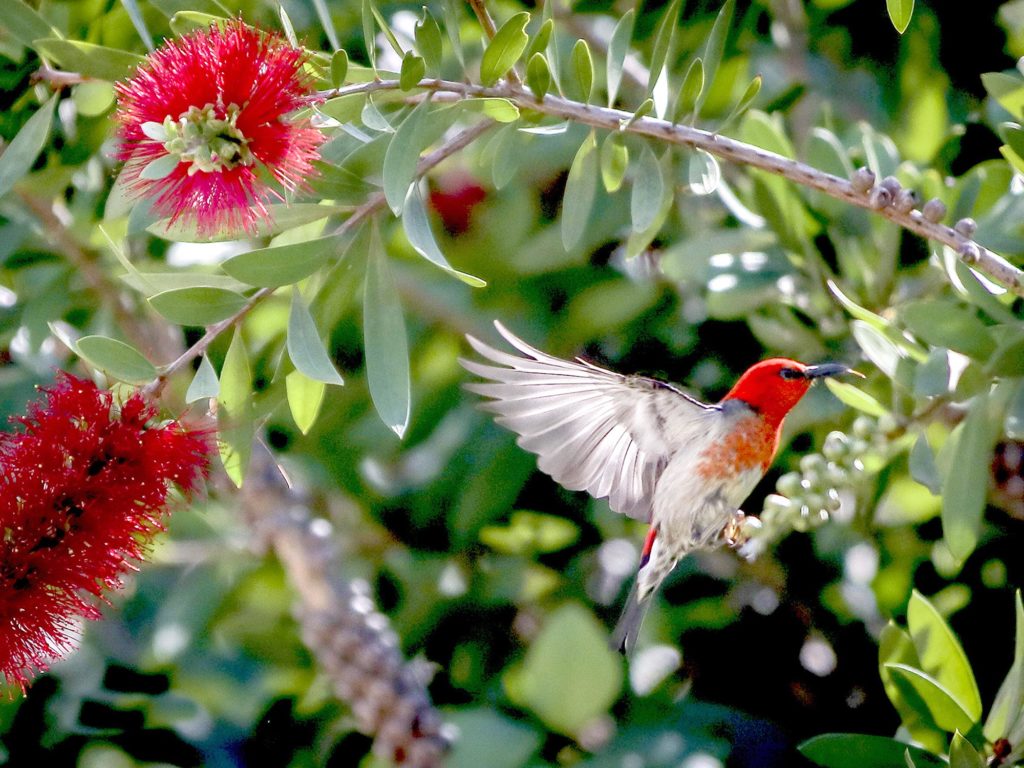Plants to attract Whitsunday wildlife! One of the best things about having a backyard in the Whitsundays is sharing a slice of the great outdoors with the local wildlife. The good news is that by planning your planting with this in mind, you can make your garden a haven that invites wildlife to spend more time there.
Plants and animals have a symbiotic relationship, having evolved together to help each other survive in the local environment. Animals help with pollination, seed distribution and germination for plant life, and in turn, plants provide habitat, food and protection for wildlife. That’s why plants native to the local area are best for attracting local wildlife.
So, what are the best plants to attract Whitsunday Wildlife (particularly birds)?
Plants that produce nectar, berries and other fruits are the ideal plants to attract birds because they provide a food source for them. For example:
- Grasstrees (Xanthorrhoea): The flowers that spiral up the grasstree’s spear-like spike produce good quantities of delicious nectar for birds to feast on.
- Bottlebrush and other melaleucas: These striking plants attract birds species like honeyeaters.
- Lillypillys: The nectar within the flowers and the fruits provide an attractive food source for local birds.
How can you attract other types of wildlife to your garden?
While there are plenty of options for plants to attract Whitsunday wildlife – particularly birds, you don’t need to stop there. Your choice of plants can also help to invite butterflies, bees, other insects, lizards and frogs into your backyard. Let’s take a look at a few plants you might consider:
- Lemon myrtle: The distinct lemon scent after rain is pleasing to us, but the nectar this plant produces also attracts several species of butterfly.
- Native frangipani: While you can enjoy the sweetly perfumed flowers, butterflies will be drawn to the native frangipani nectar.
- Coffee bush: Provides a native source of plant food for caterpillars and therefore encourages butterflies to breed in your backyard. As a bonus – the red berries of this plant also attract birdlife.
- Blue tongue: The pollen attracts bees, while the berries are more likely to attract birds.
- Native mulberry: This plant attracts a wide array of wildlife thanks to its sweet, edible fruit. Watch carefully and you might spot birds, bees, butterflies, lizards and other insects.
- Poplar Box & Qld Blue Gum: If you have the space for large, native trees like these, you might be lucky enough to attract koalas – for these are favourites of the cuddly fellows.
Many of Australia’s native flowering plants will help to attract black flying foxes as these are a preferred food source for them.
In terms of your general garden environment:
Mulching your garden will encourage insects, which will, in turn, attract birdlife. And creating multi-layered habitats of shrubs, ground cover and small trees for moist, shady places will offer shelter to frogs and lizards. Tussock grass, tree ferns and melaleuca, are a good place to start.
Important gardening advice:
If you want to encourage wildlife to visit or take up home in your backyard, it’s essential that you only use organic fertilisers and avoid pesticides, so as not to harm them.
Want to know more about the plant life native to our beautiful Whitsunday region? Our team can help! Simply call (07) 4946 1258 or pop in for a visit.


Recent Comments